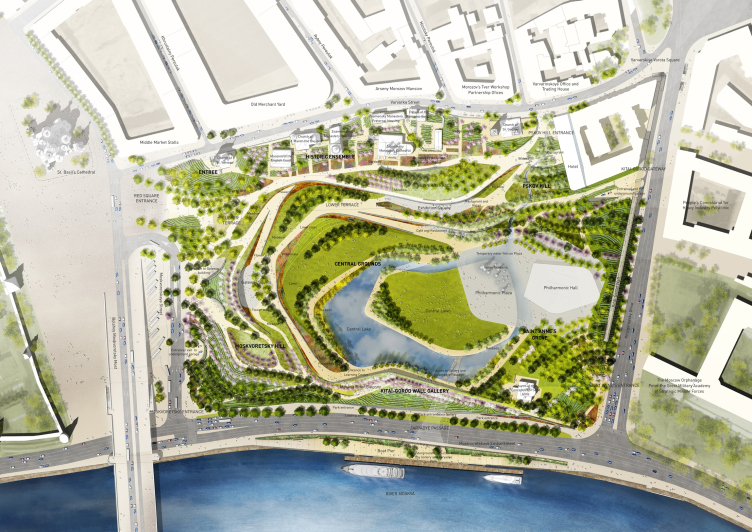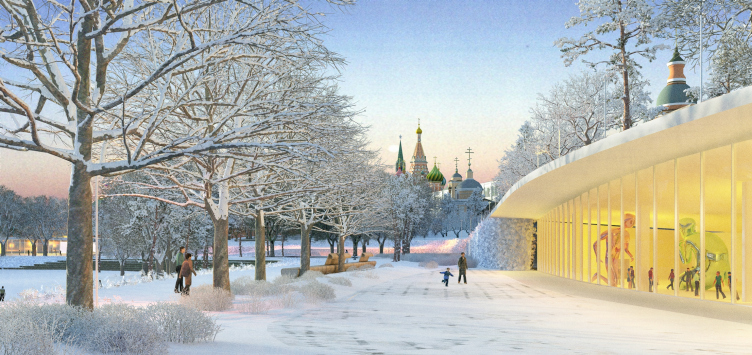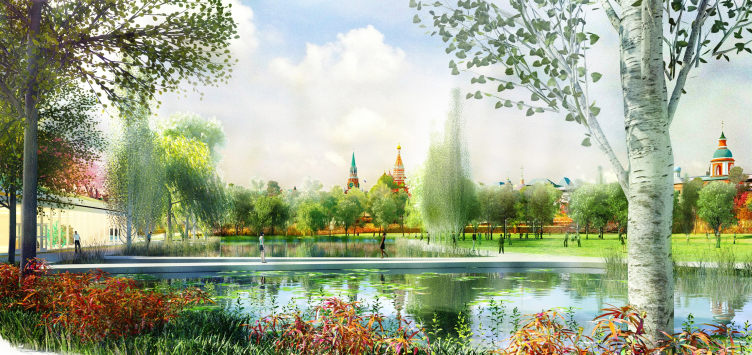
"Zaryadye" Park. Project by the consortium "Reserve + Maxwan + Latz und Partner"
From the very start, this consortium was formed "on a parity basis". “We and Maxwan Bureau go back a long way and we know that we both are capable of effective and efficient cooperation. However, to develop the concept for "Zaryadye" park our two teams would not have been enough, so our main challenge was to find a top-of-the-list landscape designer" - Vladimir Plotkin shares. - It was Maxwan that suggested working with Latz und Partner because we had already been quite familiar with one another after working on several joint projects, and it was not until we got their consent to cooperate that we finally decided to take part in the competition. Together, all the participants of the consortium had met three times - in Russia, in Germany, and in the Netherlands. The first workshop took place in Moscow shortly after the shortlist of the contest was announced”.
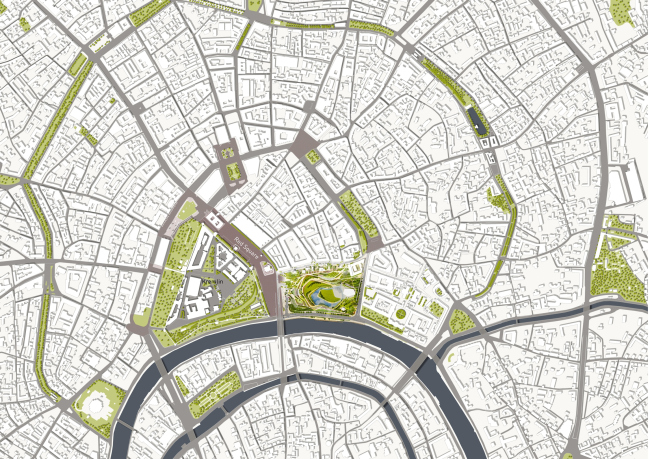
"Zaryadye" Park. Project by the consortium "Reserve + Maxwan + Latz und Partner"
The architect recalls that the most difficult challenge of the two first workshops in Moscow and Munich was, without even getting down to actual drawing, settle the main question: what kind of park can be there in the heart of Moscow. “We examined three possible solutions. The first solution was to treat the park as a symbol worthy of Moscow's best place, like a breakthrough into the future, a park that produces a "wow-effect" (I have to admit that initially this idea was a favorite with me). The second one was a park with the interestingly devised and elegant three-dimensional topographical intrigue, which is based either on its historical background or on some kind of intellectual game. And, finally, the third solution was to create a park in the form of a… park, the greatest park of all times, which enhances and emphasizes the merits of its historical environment and the natural landscape. And it was this last idea that won us over with its simplicity and its being so convincingly appropriate on this land spot that is really tired as it is from all of the endless experiments of recent years. So our choice was made. True, the "wow-effects" in the form of unprecedented abundance of trees and shrubbery that create most unexpected color palettes during the year, and the intrigue of the diverse "semi-functional" spaces formed by the trees flanking the endless spiral-like trail, are also playing an important part in the project".
Following a joint decision on the main idea and basic conceptual solutions, the areas of responsibility of each of the groups were defined: "Reserve Group" in this project was responsible for the architecture, Latz und Partner - for the landscape design and dendrology, and Maxwan - for the town-planning issues, the layouts, and, together with Reserve, it coordinated the management of the project.
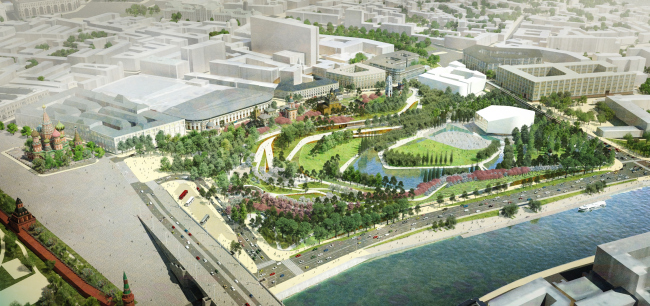
"Zaryadye" Park. Project by the consortium "Reserve + Maxwan + Latz und Partner"
In fact, what the architects do is they recreate the topography of this place in the form that preceded the historical planning of Zaryadye. Instead of the walks-through and strict dividing into sectors and plots, the place is ruled by smooth outlines that follow the logic of gradually lowering relief. One can say that it was the existing relief drop (some 16 meters from the Varvarka Street to the Moskva River Embankment) that became the main theme of the project - the park is treated as a system of terraces cascading down to the water. By using them, the architects achieve the necessary effect - the landscaped territory cast a cooling shadow on Moscow's most famous places, thus enhancing their significance - while all the functions that make the park a self-sufficient recreation area, are hidden inside the giant green steps.

"Zaryadye" Park. Project by the consortium "Reserve + Maxwan + Latz und Partner"
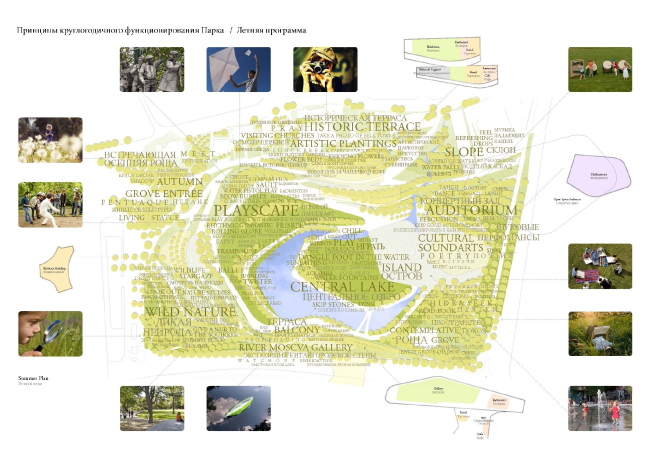
"Zaryadye" Park. Project by the consortium "Reserve + Maxwan + Latz und Partner"
This kind of layout allows the architects to address yet another vital challenge - that is to create a diverse, and, most importantly, a sufficiently long walking route. Here is the thing - "Zaryadye" is vastly different from Gorky Park or Hyde Park; its area, by the park standards, is at least modest, and if one treats it as a mere territory connecting the Red Square, Ilinka Square, and the Moskva River, there is a risk that the pedestrians will not notice it at all. And it is the circular route that will make the pedestrians involuntarily slow down and, once in the park, switch to a strolling pace. Throughout the route, the architects place cafes, showrooms, training centers, and shops - such a "necklace" of buildings and pavilions is especially relevant in Russia in the wintertime when the walks get shorter, and the need to go somewhere warm becomes more pressing. The authors of the project, incidentally, are positive that in winter this park will be just in as much demand as it will be in summer: the transparency of the scenery views and the snowy vistas would emphasize the beauty of Russian winter and form here a place quiet and peaceful - the kind that is so hard to find in today's Moscow. Still, nobody is speaking about canceling the traditional winter fun activities: the project provides for snow fortresses, ice sculptures, and of course, sleigh rides from the Pskov slide.

"Zaryadye" Park. Project by the consortium "Reserve + Maxwan + Latz und Partner"
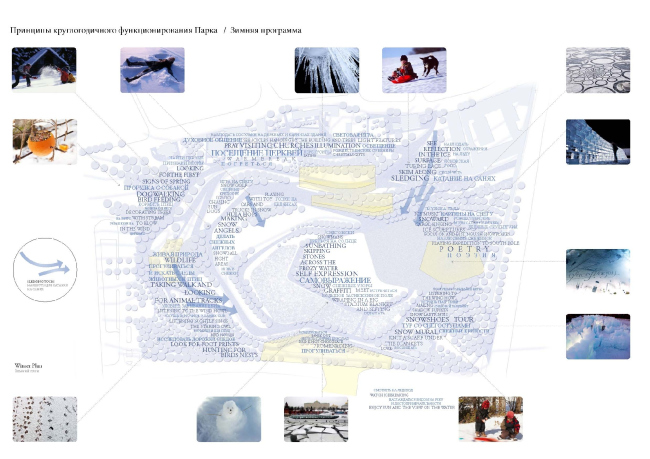
"Zaryadye" Park. Project by the consortium "Reserve + Maxwan + Latz und Partner"
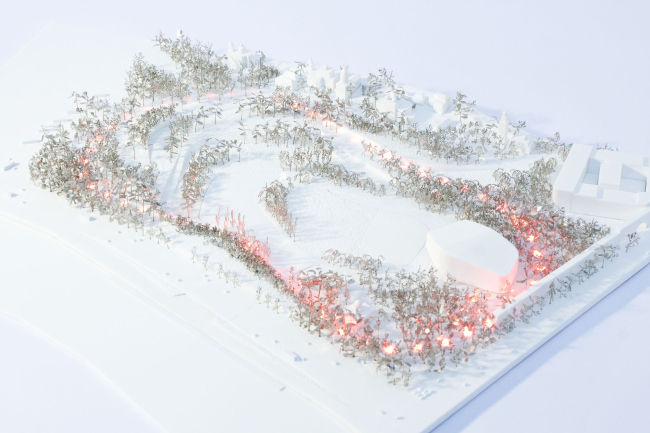
"Zaryadye" Park. Project by the consortium "Reserve + Maxwan + Latz und Partner"
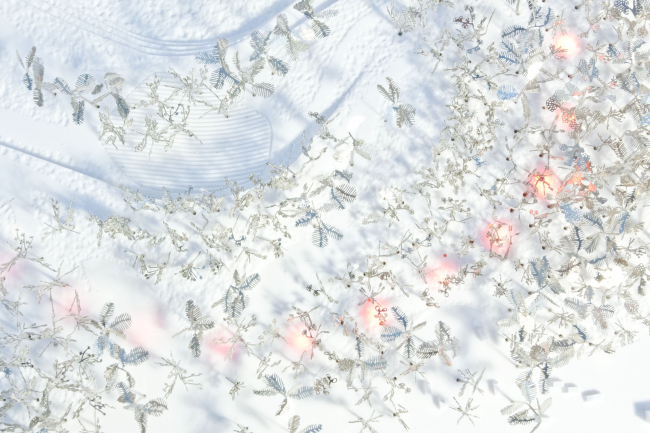
"Zaryadye" Park. Project by the consortium "Reserve + Maxwan + Latz und Partner"
Totally, the park has in it four levels of terraces. The upper level of the Varvarka Street is the "belvedere" that commands the views of the Moskva River; the terrace beneath it is the historic one, with churches and monuments. The new functions are concentrated predominantly at the third level (it is these function that are united by the single pedestrian ring), while the fourth bottom terrace is in fact a sort of an open-air stage, the park' main public space mean for organizing large-scale events. At this same level, as far away from the Kremlin as possible, there is the Philharmonic Hall (as expected, it will be built through a dedicated tender, this is why, for the time being, it is designated by a symbolic volume), the underground car park also exits here. The latter is the special pride of the authors: designing the space for storing vehicles, they still were able to avoid turning it into a "stone bag" hidden underground. The relief drop here is also used to its best advantage: in fact, the car park is a large hood, turned to the trees and shrubs and "collecting" the excessive sunlight.
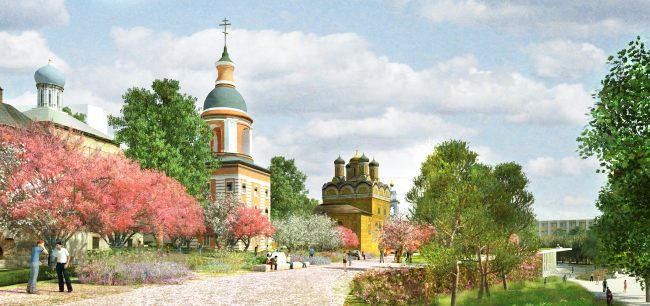
"Zaryadye" Park. Project by the consortium "Reserve + Maxwan + Latz und Partner"
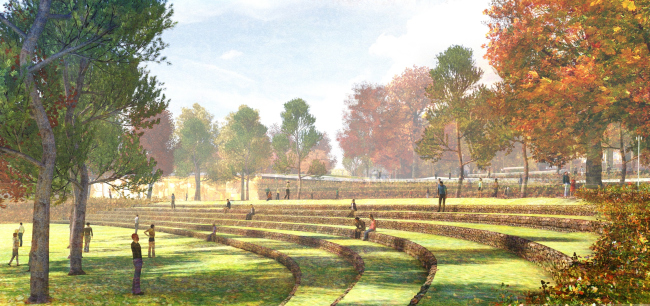
"Zaryadye" Park. Project by the consortium "Reserve + Maxwan + Latz und Partner"
Just as unconventional is the solution that was found to link the park with the Moskva River embankment, one that the "Zaryadye" project is meant to breathe new life into. According to the contest specifications, the contestants were to link the park with the Moskva River with some sort of a bridge and an overpass, and it was only the team "Reserve + Maxwan + Latz und Partner" that took the liberty to rethink this requirement. In order to avoid the necessity of grappling with the six-lane road at the top, the architects make a wide passage underneath it. The underground underpass is the last thing in the world that it looks like - rather a gallery or yet another, the "super-bottom" terrace that leads into a small but beautiful tunnel. The latter, by the way, coincides with the historical gates leading into the "China-Town Wall", whose "museum" archeological elements will become its main adornment. An additional lower level also appears at the embankment itself - the Moskva River makes in this place a slight bend, which the architects straighten out with the aid of two smooth ramps, leading the basic pavement away from them. And, although the pedestrians will still be able to walk along the traffic way, the cozy territory next to the water with the bikeways and the marina for the waterbuses are not visually connected with the stream of cars in any way. Thanks to the underground passage, "Zaryadye" park gets not only the required connection with the river but also an imposing extra entrance - the judging board of the contest gave high critical acclaim to this proposal by "Reserve" and its partners; later the Chief Architect of Moscow Sergey Kuznetsov even announced that it would possibly be used in the winning project.
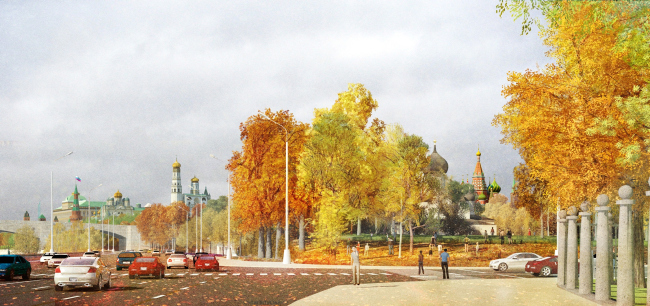
"Zaryadye" Park. Project by the consortium "Reserve + Maxwan + Latz und Partner"
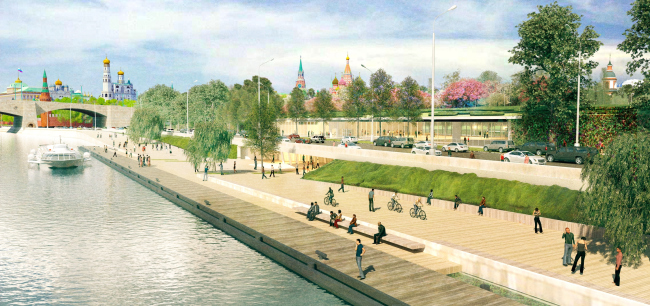
"Zaryadye" Park. Project by the consortium "Reserve + Maxwan + Latz und Partner"

"Zaryadye" Park. Project by the consortium "Reserve + Maxwan + Latz und Partner"
As was already mentioned before, the main "building material" that forms the park territories is in fact trees and shrubs. These are the flower walls, hedges, lawns, flower beds, and, of course, the trees, which in the park are represented in the variety that is unique for Moscow. “Wealth of the forms of vegetation, according to our concept, symbolizes the variety of the inhabitants of Moscow and Russia, and furthermore it guarantees that the park will boast a saturated color palette almost all year round”, explain Anton Egerev, leader of the 5th architectural workshop of “Reserve”. The park also has a body of water of its own - the symbolic connection to the river is underlined with the help of an artificial creek that, in the shape of a giant horseshoe, straddles the Philharmonic Hall building, as well as by the brook running down the slope and turning into a water surface covering the main square. This "thin film of water", just like the lake, will be reflecting the wealth of the surrounding architectural monuments, while in the night time it will serve, together with the rest of the park, as the background of the various lighting scenarios.

"Zaryadye" Park. Project by the consortium "Reserve + Maxwan + Latz und Partner"
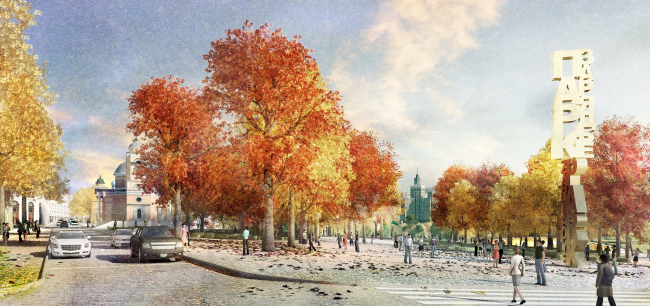
"Zaryadye" Park. Project by the consortium "Reserve + Maxwan + Latz und Partner"
Designing the park as, predominantly, a work of landscape design, the consortium Reserve + Maxwan + Latz und Partner creates in Zaryadye a space that is as much as possible comfortable, natural, and thus "timeless" - the XXI century makes its presence known not with the modern technological twists but the so-rare for Russia idea of proportion and respect for the immediate surroundings.
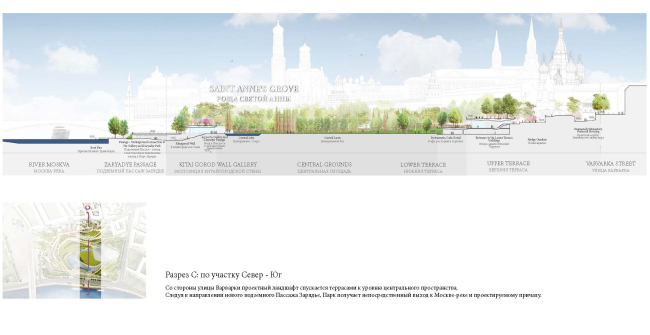
"Zaryadye" Park. Project by the consortium "Reserve + Maxwan + Latz und Partner"
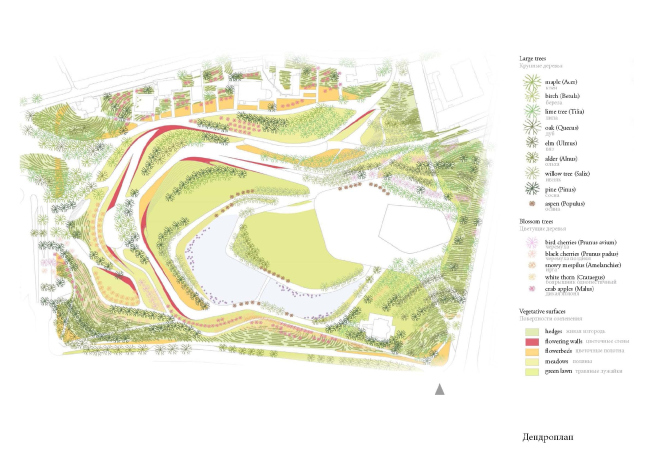
"Zaryadye" Park. Project by the consortium "Reserve + Maxwan + Latz und Partner"

"Zaryadye" Park. Project by the consortium "Reserve + Maxwan + Latz und Partner"
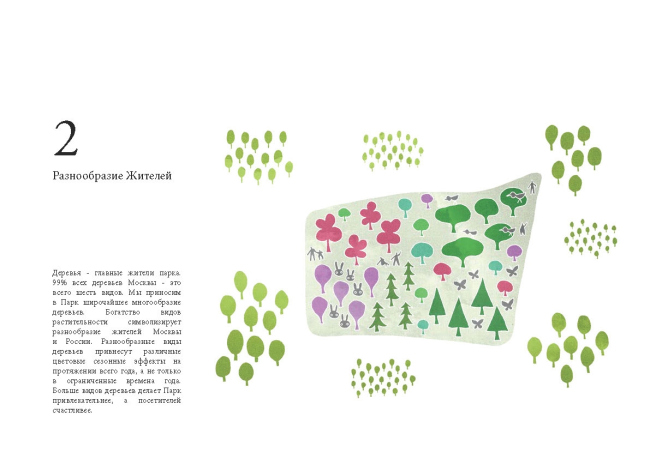
"Zaryadye" Park. Project by the consortium "Reserve + Maxwan + Latz und Partner"
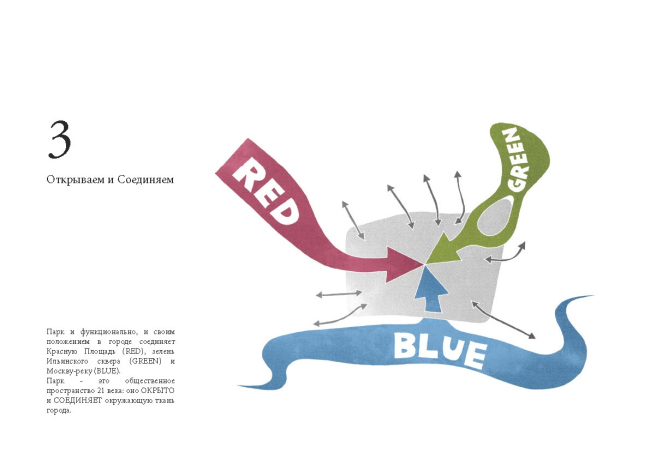
"Zaryadye" Park. Project by the consortium "Reserve + Maxwan + Latz und Partner"
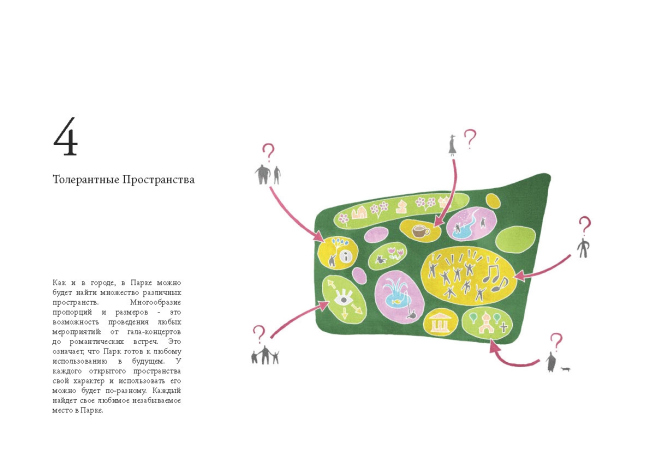
"Zaryadye" Park. Project by the consortium "Reserve + Maxwan + Latz und Partner"
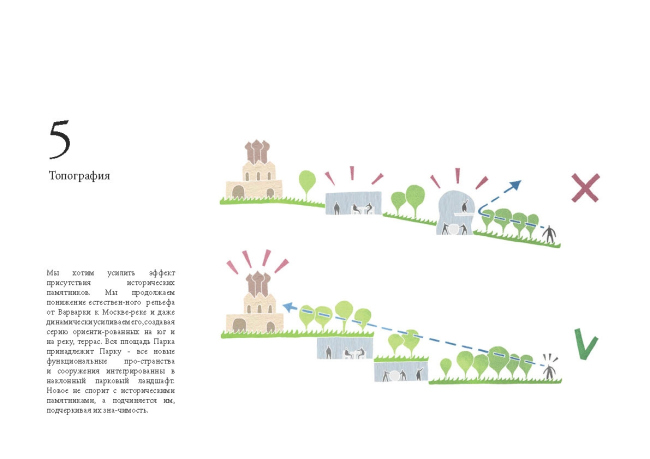
"Zaryadye" Park. Project by the consortium "Reserve + Maxwan + Latz und Partner"
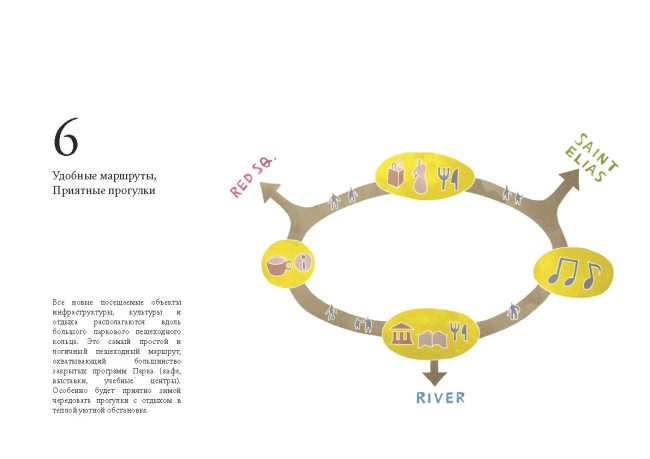
"Zaryadye" Park. Project by the consortium "Reserve + Maxwan + Latz und Partner"
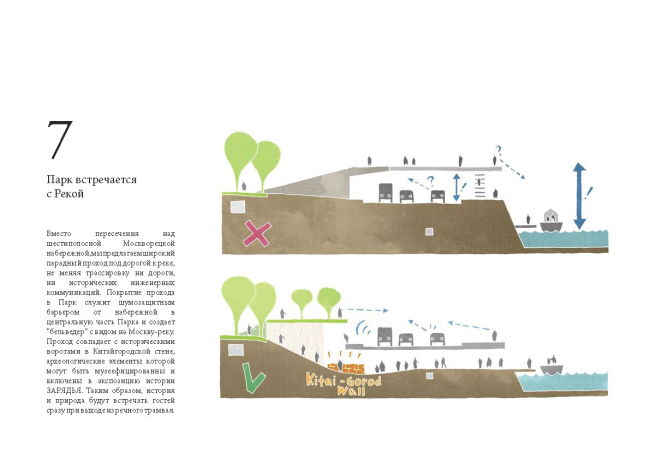
"Zaryadye" Park. Project by the consortium "Reserve + Maxwan + Latz und Partner"
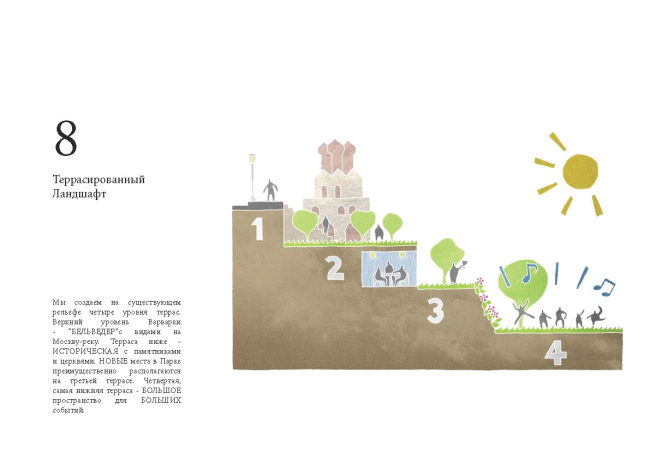
"Zaryadye" Park. Project by the consortium "Reserve + Maxwan + Latz und Partner"





